Related Research Articles

The Defense Advanced Research Projects Agency (DARPA) is a research and development agency of the United States Department of Defense responsible for the development of emerging technologies for use by the military.
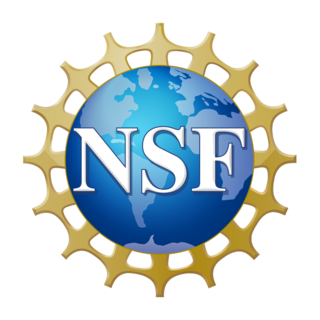
The U.S. National Science Foundation (NSF) is an independent agency of the United States federal government that supports fundamental research and education in all the non-medical fields of science and engineering. Its medical counterpart is the National Institutes of Health. With an annual budget of about $9.9 billion, the NSF funds approximately 25% of all federally supported basic research conducted by the United States' colleges and universities. In some fields, such as mathematics, computer science, economics, and the social sciences, the NSF is the major source of federal backing.

Science policy is concerned with the allocation of resources for the conduct of science towards the goal of best serving the public interest. Topics include the funding of science, the careers of scientists, and the translation of scientific discoveries into technological innovation to promote commercial product development, competitiveness, economic growth and economic development. Science policy focuses on knowledge production and role of knowledge networks, collaborations, and the complex distributions of expertise, equipment, and know-how. Understanding the processes and organizational context of generating novel and innovative science and engineering ideas is a core concern of science policy. Science policy topics include weapons development, health care and environmental monitoring.
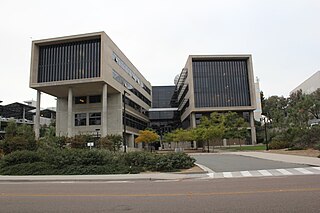
The San Diego Supercomputer Center (SDSC) is an organized research unit of the University of California, San Diego (UCSD). SDSC is located at the UCSD campus' Eleanor Roosevelt College east end, immediately north the Hopkins Parking Structure.
The National Nanotechnology Initiative (NNI) is a research and development initiative which provides a framework to coordinate nanoscale research and resources among United States federal government agencies and departments.

Semiconductor Research Corporation (SRC), commonly known as SRC, is a high-technology research consortium active in the semiconductor industry. It is a leading semiconductor research consortium. Todd Younkin is the incumbent president and chief executive officer of the company.

David A. Bader is a Distinguished Professor and Director of the Institute for Data Science at the New Jersey Institute of Technology. Previously, he served as the Chair of the Georgia Institute of Technology School of Computational Science & Engineering, where he was also a founding professor, and the executive director of High-Performance Computing at the Georgia Tech College of Computing. In 2007, he was named the first director of the Sony Toshiba IBM Center of Competence for the Cell Processor at Georgia Tech.
Neuroinformatics is the emergent field that combines informatics and neuroscience. Neuroinformatics is related with neuroscience data and information processing by artificial neural networks. There are three main directions where neuroinformatics has to be applied:
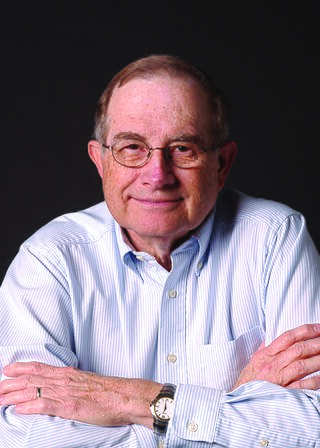
Cornelius Francis "Neal" Lane, is an American physicist and senior fellow in science and technology policy at Rice University's Baker Institute for Public Policy and Malcolm Gillis University Professor Emeritus of Physics and Astronomy Emeritus at Rice University in Houston, Texas.
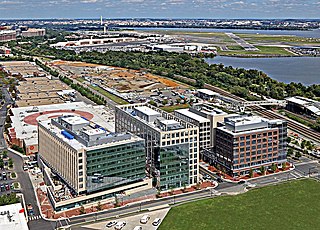
The Institute for Defense Analyses (IDA) is an American non-profit corporation that administers three federally funded research and development centers (FFRDCs) – the Systems and Analyses Center (SAC), the Science and Technology Policy Institute (STPI), and the Center for Communications and Computing (C&C) – to assist the United States government in addressing national security issues, particularly those requiring scientific and technical expertise. It is headquartered in Alexandria, Virginia.
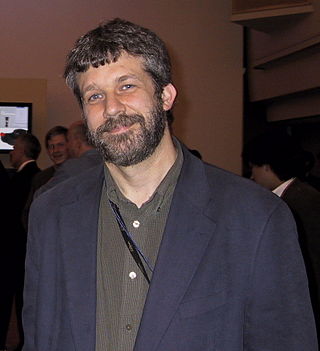
Charlie Catlett is a senior computer scientist at Argonne National Laboratory and a visiting senior fellow at the Mansueto Institute for Urban Innovation at the University of Chicago. From 2020 to 2022 he was a senior research scientist at the University of Illinois Discovery Partners Institute. He was previously a senior computer scientist at Argonne National Laboratory and a senior fellow in the Computation Institute, a joint institute of Argonne National Laboratory and The University of Chicago, and a senior fellow at the University of Chicago's Harris School of Public Policy.
The Alan T. Waterman Award, named after Alan Tower Waterman, is the United States's highest honorary award for scientists no older than 40, or no more than 10 years past receipt of their Ph.D. It is awarded on a yearly basis by the National Science Foundation. In addition to the medal, the awardee receives a grant of $1,000,000 to be used at the institution of their choice over a period of five years for advanced scientific research.
The National Academy of Engineering (NAE) is an American nonprofit, non-governmental organization. The National Academy of Engineering is part of the National Academies of Sciences, Engineering, and Medicine, along with the National Academy of Sciences (NAS), the National Academy of Medicine, and the National Research Council.
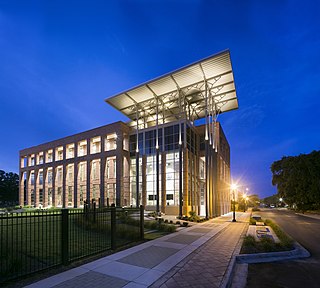
The Florida Institute for Human & Machine Cognition (IHMC) is a not-for-profit research institute of the State University System of Florida, with locations in Pensacola and Ocala, Florida. IHMC scientists and engineers investigate a broad range of topics related to building systems aimed at amplifying and extending human cognitive, physical and perceptual capacities.

Distributed European Infrastructure for Supercomputing Applications (DEISA) was a consortium of major national supercomputing centres in Europe. Initiated in 2002, it became a European Union funded supercomputer project. The consortium of eleven national supercomputing centres from seven European countries promoted pan-European research on European high-performance computing systems by creating a European collaborative environment in the area of supercomputing.

Subra Suresh is an Indian-born American engineer, materials scientist, and academic leader. He is currently Professor at Large at Brown University and Vannevar Bush Professor of Engineering Emeritus at the Massachusetts Institute of Technology (MIT). He was Dean of the School of Engineering at MIT from 2007 to 2010 before being appointed as Director of the National Science Foundation (NSF) by Barack Obama, where he served from 2010 to 2013. He was the president of Carnegie Mellon University (CMU) from 2013 to 2017. Between 2018 and 2022, he was the fourth President of Singapore's Nanyang Technological University (NTU), where he was also the inaugural Distinguished University Professor.
Materials Research Science and Engineering Centers (MRSECs) are university based research centers supported by the MRSEC Program of the Division of Materials Research at the U.S. National Science Foundation (NSF). The centers support interdisciplinary research on materials science. MRSECs are a significant component of NSF's center-based research portfolio. MRSECs were established by NSF in 1994 but their roots go back to the post-Sputnik era. These centers required significant changes in the conduct of materials research and education.

Edward Delano "Ed" Lazowska is an American computer scientist. He is a Professor, and the Bill & Melinda Gates Chair emeritus, in the Paul G. Allen School of Computer Science & Engineering at the University of Washington.

Francine Berman is an American computer scientist, and a leader in digital data preservation and cyber-infrastructure. In 2009, she was the inaugural recipient of the IEEE/ACM-CS Ken Kennedy Award "for her influential leadership in the design, development and deployment of national-scale cyberinfrastructure, her inspiring work as a teacher and mentor, and her exemplary service to the high performance community". In 2004, Business Week called her the "reigning teraflop queen".
The White House BRAIN Initiative is a collaborative, public-private research initiative announced by the Obama administration on April 2, 2013, with the goal of supporting the development and application of innovative technologies that can create a dynamic understanding of brain function.
References
- 1 2 3 4 Gould, M. "GIScience grand challenges: How can research and technology in this field address big-picture problems? ArcUser, 13 (4), 64–65." (2010). Accessed at
- ↑ Omenn, Gilbert S. "Grand challenges and great opportunities in science, technology, and public policy." Science 314.5806 (2006): 1696-1704. accessed at
- ↑ "Tackling COVID-19 as a Grand Challenge | Digital Society Blog". HIIG. 2020-06-08. Retrieved 2021-04-12.
- ↑ Mertz, D.R. (2005). Grand Challenges: A Strategic Plan for Bridge Engineering, NCHRP Project 20-07/Task 199, Transportation Research Board, Washington, DC.v
- ↑ Regli, William, and Jeff Heisserman. "Report from the Royal Academy of Engineering’s Global Grand Challenges Summit." Computer-Aided Design 11.45 (2013): 1485-1487.
- ↑ Sawyer, Tom. "Engineers Rise to Challenge for Infrastructure Innovations." Enr, vol. 279, no. 1, 2017, pp. 45
- ↑ Marburger, J. "Grand challenges for disaster reduction." National Science and Technology Council (2005). Accessed on November 5,2017 at
- ↑ NCTM Research Committee. "Grand challenges and opportunities in mathematics education research." Journal for Research in Mathematics Education 46.2 (2015): 134-146. Accessed at
- ↑ George, Gerard; Howard-Grenville, Jennifer; Joshi, Aparna; Tihanyi, Laszlo (2016-09-30). "Understanding and Tackling Societal Grand Challenges through Management Research". Academy of Management Journal. 59 (6): 1880–1895. doi:10.5465/amj.2016.4007. ISSN 0001-4273.
- ↑ Ferraro, Fabrizio; Etzion, Dror; Gehman, Joel (2015-03-01). "Tackling Grand Challenges Pragmatically: Robust Action Revisited". Organization Studies. 36 (3): 363–390. doi:10.1177/0170840614563742. ISSN 0170-8406. S2CID 52401497.
- ↑ Carton, Guillaume; Parigot, Julia; Roulet, Thomas (2023-03-23). "How Not to Turn the Grand Challenges Literature Into a Tower of Babel?". Business & Society: 000765032311593. doi: 10.1177/00076503231159385 . ISSN 0007-6503.
- ↑ Seelos, Christian; Mair, Johanna; Traeger, Charlotte (2022-12-19). "The future of grand challenges research: Retiring a hopeful concept and endorsing research principles". International Journal of Management Reviews. 25 (2): 251–269. doi: 10.1111/ijmr.12324 . hdl: 10419/287801 . ISSN 1460-8545.
- ↑ "A Research and Development Strategy for High Performance Computing", Executive Office of the President, Office of Science and Technology Policy, November 20, 1987
- ↑ Executive Office of the President, Office of Science and Technology Policy, "The Federal High Performance Computing Program," Sept. 1989, pp. 49–50: Appendix A Summary
- ↑ "Task Force Report Grand Challenges" (PDF). nsf.gov. 2011.